Z80 Assembly meter v6.0.0
Jul 2, 2025
Font ligatures!? Where we're going we don't need font ligatures!!
The Z80 Assembly meter extension for Visual Studio Code reaches version 6.0.0
with Inlay Hints (additional information about source code that is rendered inline)
that show the timing of the execution flow of subroutines (up to the first unconditional exit point),
and timing of the execution flow up to conditional and unconditional exit points.
The extension is also available now in Open VSX Registry
for users of VS Codium (or any other VS Code fork).
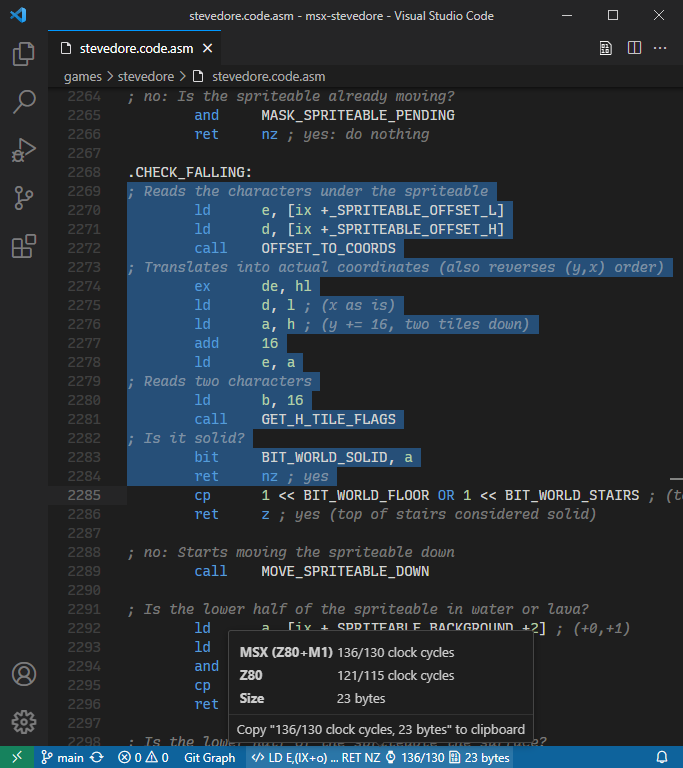
Get it here:
Z80 Assembly meter
, or here:
Z80 Assembly meter
Browse the source code at
github.com/theNestruo/z80-asm-meter-vscode
Happy coding!!
Desperado - Music patch
Jan 2, 2025
Desperado (Topo Soft, 1987), also known as Gunsmoke (Go!, 1987), was released for ZX Spectrum, Amstrad CPC, and MSX.
If you listen to the title music
(composed by Gominolas)
of the MSX and the Amstrad CPC versions, you will notice the MSX version is missing one entire channel.
This can be confirmed using the built-in PSG Toy tool of meisei MSX emulator (by Hap),
where channel C is continuously displays $000 / 0:
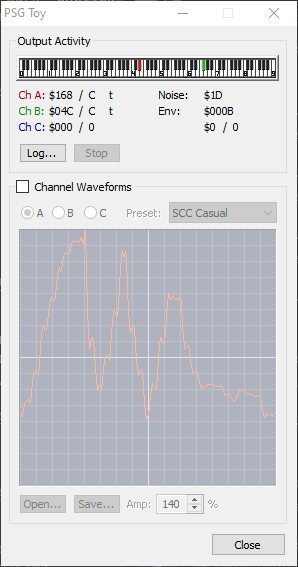
Does this happen by a bug of the replayer code?
Has it been deliberately cut to save space?
Let's find out…
The following fragment of code initializes the music in the buffers used by the replayer:
LA886: ; ...
xor a ; Channel A
ld de, $8854 ; Data for channel A
call L7FE9 ; Initialize music channel (A)
inc a ; Channel B
ld de, $88A3 ; Data for channel B
call L7FE9 ; Initialize music channel (B)
inc a ; Channel C
ld de, $898A ; Data for channel C
call L7FE9 ; Initialize music channel (C)
LA8BE: call LAB4E ; Check for any key
jr z,LA8BE ; Infinite loop until any key is pressed
; ...
And the first bytes of the data for every channel are:
; Data for channel A
L8854: db $85, $64, $87, $00, $81, $01, $80, $0C
db $83, $10, $8C, $00, $21, $1F, $1D, $21, ...
; Data for channel B
L88A3: db $87, $01, $81, $01, $8A, $01, $80, $0C
db $8C, $04, $83, $10, $39, $3C, $3C, $83, ...
; Data for channel C
L898A: db $8B, $00, $81, $01, $80, $0D, $83, $10
db $30, $83, $08, $32, $33, $83, $10, $34, ...
The replayer (invoked within the H.TIMI hook) is located at L8008.
Reading its disassembly reveals that the bytes with its most significant bit (the $80+n bytes) are “commands”.
Each command invokes one subroutine based on the following indirection table:
L84BB: dw L8202 ; Subroutine for command: $80
dw L8220 ; Subroutine for command: $81
dw L8282 ; Subroutine for command: $82
...
dw L822B ; Subroutine for command: $8b
...
dw L8395 ; Subroutine for command: $8e
dw -1 ; Subroutine for command: $8f (invalid)
...
dw -1 ; Subroutine for command: $e5 (invalid)
Command $8B, only used in channel C, seems to completely mute a channel
(by zeroing the replayer working buffer for that channel).
As it happens to appear in the first byte of the data for that channel,
it can be skipped by initializing the channel two bytes after (i.e.: ld de, $898A + 2),
unmuting the channel, and revealing that the full data for that channel is there.
However, it will use a very monotonous timbre and a constant volume.
A better option is to remove that command $8B, replacing it by the command $87.
This command $87 is used at the beginning of the data of the other two channels,
and seems to set the “instrument”, the volume variations that shape a pseudo-envelope.
The difference is notable, as you can hear in Araubi's post in X
and Araubi's post in Bluesky.
Enjoy!!
Namcot patches
May 11, 2024
Based on
previous work
by
TINY野郎,
I have prepared IPS patches for some Namcot MSX games.
Also, these patches includes the fix of a graphical glitch of
Dig Dug (NAMCOT, 1984)
in MSX2 or later that, as far as I know, was known but had never been actually patched.
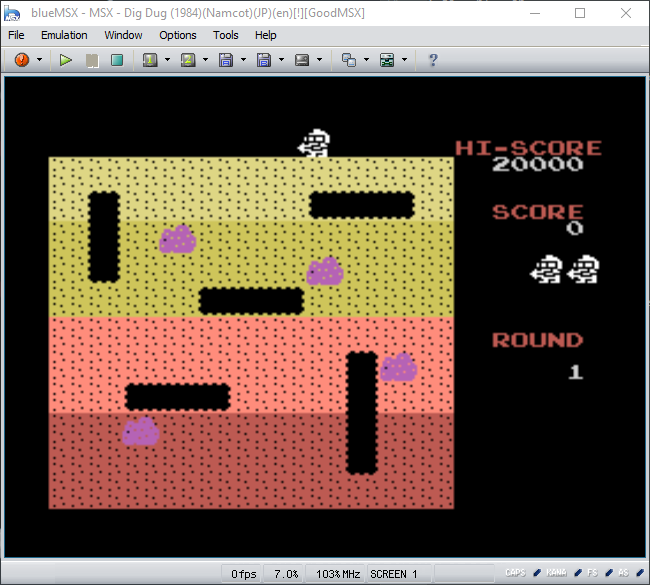
Get them here:
Namcot - patches.zip
Browse the source code at
github.com/theNestruo/msx-namcot-patch
Happy patching!!
Congratulations, Trucho!
Apr 27, 2024
Congratulations, Trucho!
Trucho won
Best 8-bit game in the II Edition of the RetroPaella Awards '24
held at
Retrópolis Valencia!
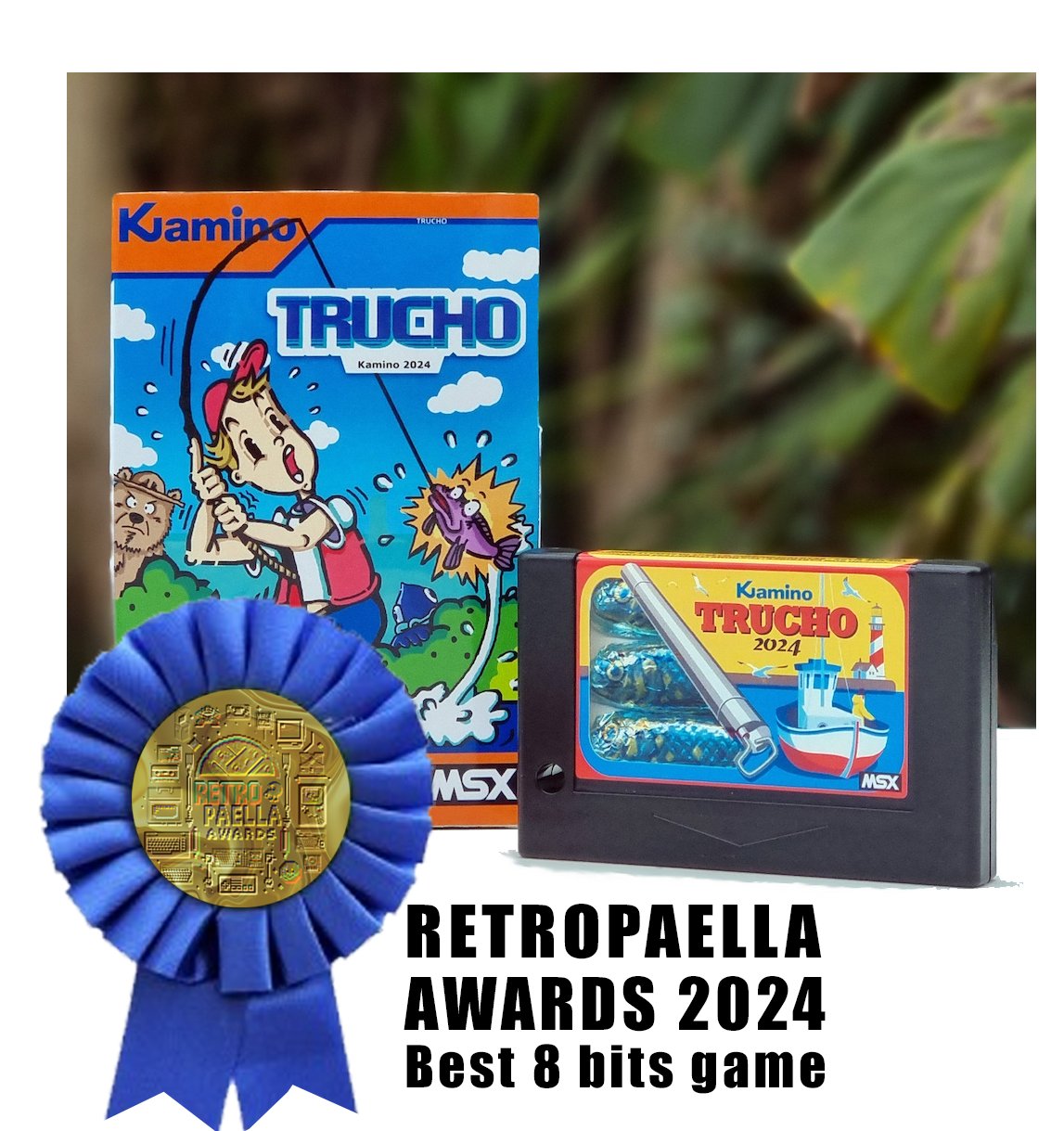
Trucho physical cartridges are available at
MSX Cartridge Shop
and digital editions are available at
thenestruo.itch.io/trucho
Enjoy!!
Trucho
Apr 6, 2024
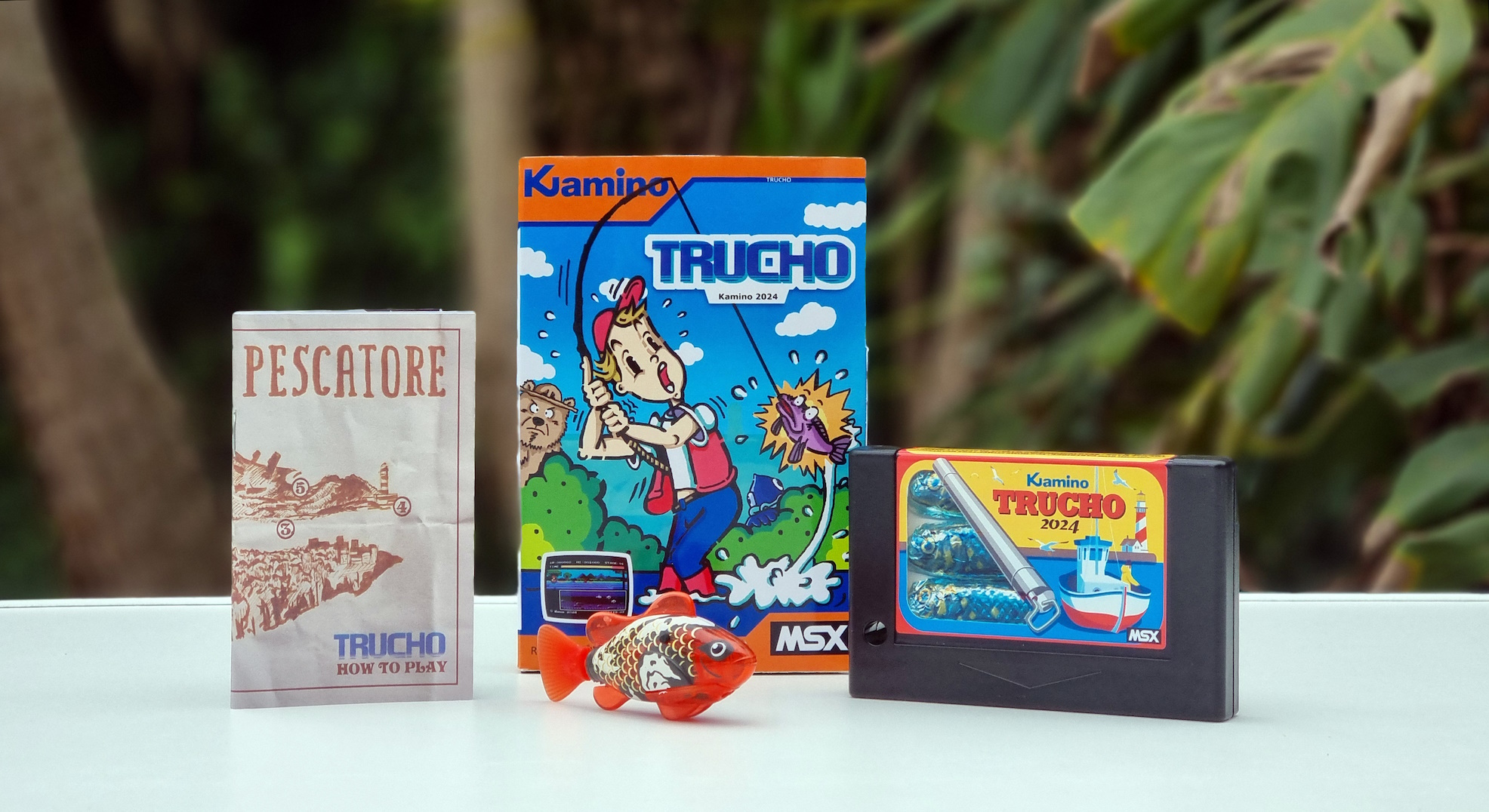
Physical cartridges available now at
MSX Cartridge Shop
!
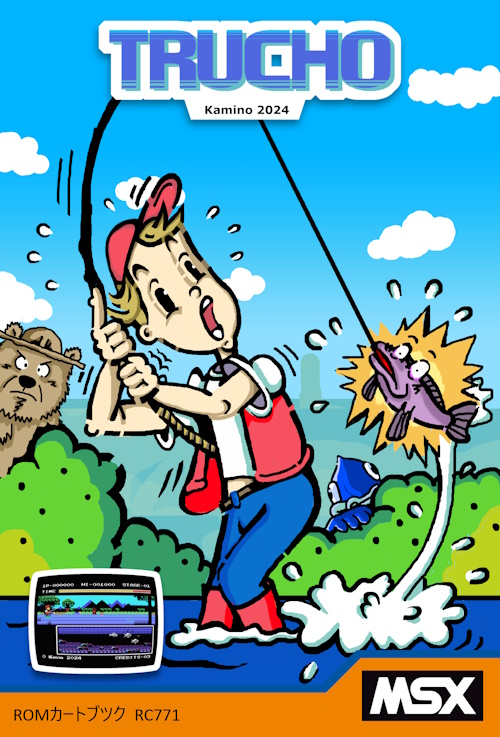
Digital editions available now at
thenestruo.itch.io/trucho
Have fun!!
Z80 Assembly meter v4.0.0
Aug 17, 2023
Font ligatures!? Where we're going we don't need font ligatures!!
The Z80 Assembly meter extension for Visual Studio Code reaches version 4.0.0
with huge performance improvements and supporting:
NEC PC-8000 series, Sjasm and SjASMPlus repeat count,
SjASMPlus register list instructions and repetitions,
and advanced timing algorithms.
Major version 6.0.0 released
RUN'23 minigame
Apr 15, 2023
A mini-game for four players in one MSX.
Coded in two evenings for the RUN'23
(“Reunión de Usuarios de MSX del Norte”)
held in Hoznayo (Cantabria, Spain) on April 15th, 2023.
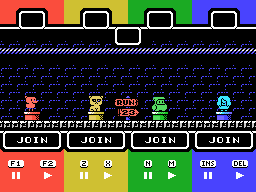
Get the cartridge image here:
run23.zip
Browse the source code at
github.com/theNestruo/msx-msxlib/tree/master/games/minigames/run23
Find some friends and have fun!!
MSX slideshow of Justin Cyr's “1008 32x32 female portrait studies done in the MSX palette”
Jan 26, 2023
“Ok, here's all 1008 32x32 female portrait studies done in the MSX palette.
2 years, 3 months and one day later, it's done.”
Justin Cyr – Feb 8, 2017
Justin Cyr used the MSX palette to create 1008 32x32 female portraits.
The palette and the resolution made them a very good fit for the multicolor graphic mode
of the MSX (also known as SCREEN 3),
so I coded a slideshow to learn about MegaROMS and the multicolor graphic mode.
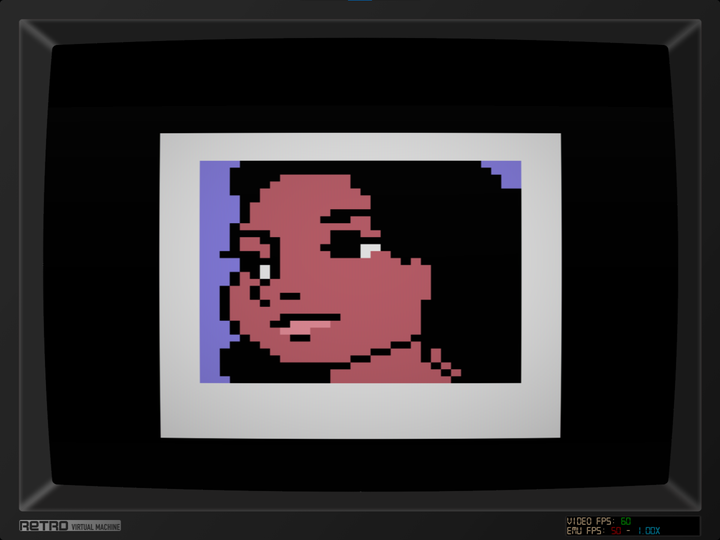
Get the cartridge image here:
Justin Cyr's 1008 32x32 female portraits slideshow.zip
Browse the source code at
github.com/theNestruo/msx-justincyr-female-portraits
Enjoy!!
A study of Sony HitBit firmware fonts
Jan 17, 2023
(Not so) recently, I acquired a Sony
HB-11
MSX, also known as
HitBit U.
The firmware of this computer was previously undumped, so I
dumped it
Beside the well-known features of Kanji-ROM, Japanese Word Processor, and English-Japanese dictionary
—they are written on top of the computer—, the firmware contains a quite unique feature:
the ability to change the system font with the extra BASIC instruction
CALL FONT(n).
Inspecting other firmwares, I found that Sony
HB-F900
also had a similar feature
with three additional fonts.
As the
HB-11
firmware easter egg is similar to the one present in the
Sony
HB-F1/HB-F1II
firmwares, I analyzed them too.
I found two additional fonts (one used for the easter egg, the other one used sparingly in the firmware),
but no
CALL FONT
instruction.
However, those fonts can still be used as system fonts using the system variable CGPNT (0xF91F, 3 bytes):
- The easter egg font is located in the slot 3-0, at address 0x47CA for the
HB-F1
(
POKE &HF91F,&H83:POKE &HF920,&HCA:POKE &HF921,&H47), or 0x485C for the
HB-F1II
(POKE &HF91F,&H83:POKE &HF920,&H5C:POKE &HF921,&H48).
- The serif font is located in the slot 3-2, at address 0x554F for the
HB-F1
(
POKE &HF91F,&H8B:POKE &HF920,&H4F:POKE &HF921,&H55), or 0x54DB for the
HB-F1II
(POKE &HF91F,&H8B:POKE &HF920,&HDB:POKE &HF921,&H54).
Now, let's take a look at all these fonts in one single image:
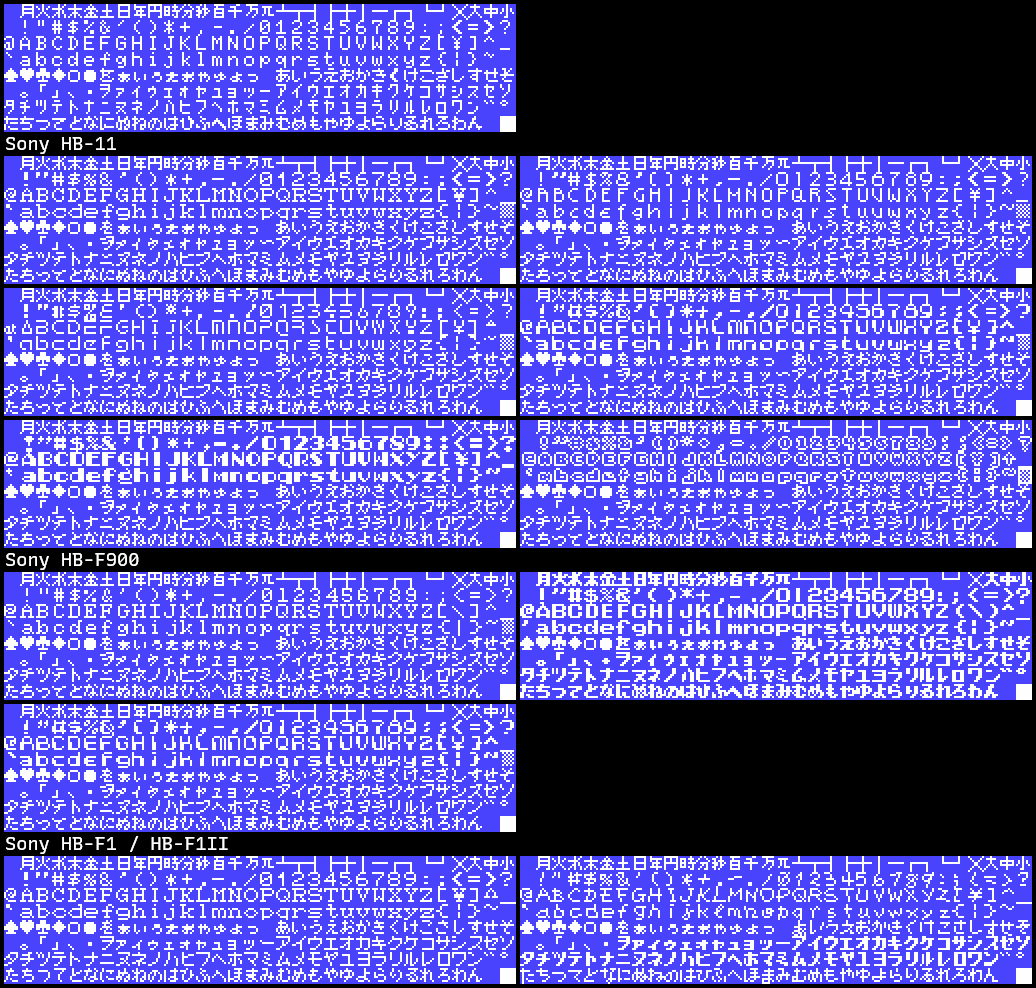
Regarding the kanji/kana part of the character set, it is curious that, despite the
HB-11
has the greater number of alternative fonts (six fonts), all of them use the same kanji/kana set:
a less geometric and more scripted version of the default system font.
This kanji/kana set is also used for two of the alternative fonts of the
HB-F900,
but it is not used in any of the
HB-F1/HB-F1II
alternative fonts.
The
HB-F1/HB-F1II
alternative fonts have two alternate kanji/kana sets:
one features slightly larger katakanas, and the other one uses a bold variant of those larger katakanas.
The rest of the characters of the kanji/kana set are different in every alternative font.
The
HB-F900
also have a bold kanji/kana set,
but it is not the same as the bold set from the
HB-F1/HB-F1II:
in this alternative font, the entire kanji/kana set is bold, and seems to be based on the default system font
(unlike the
HB-F1/HB-F1II
version, that was based on the larger katakana set).

Regarding the western characters, the only alternative set that is actually shared between computers
is the LCD-like font. This font appears in both the
HB-11
and the
HB-F900.
There is a serif alternative font in every firmware, but it is not exactly the same:
The
HB-F900
looks the first iteration of the serif font,
as some symbols are directly taken from the default system font,
and the lowercase letters seems to be designed using the default system font as a base.
The
HB-11
and the
HB-F1/HB-F1II
variants of the serif font
are more elaborated; more symbols and lowercase letters are redesigned.
Both are very similar to each other, but the
HB-F1/HB-F1II
version
seems to be the most evolved, based on some details in the uppercase and lowercase
C
letters
and the circumflex character.
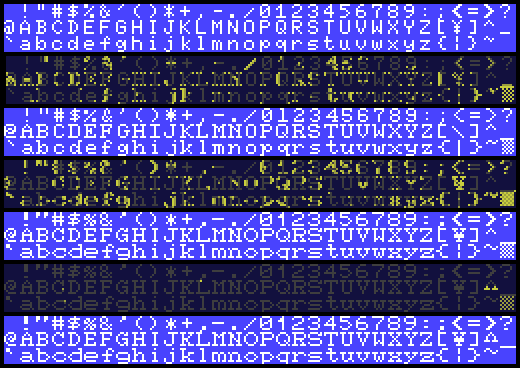
Unfortunately, using these fonts as the system font is only useful for MSX-BASIC programs.
Early software that use the system font, such as
Mr. Chin (HAL Laboratory, 1984)
or
Youkai Yashiki (CASIO, 1986), is not reading the system variable CGPNT
but CGTABL (0x0004, 2 bytes), that always points to the BIOS default system font.
Fortunately, it is possible nowadays to patch a BIOS ROM, inject one of these fonts,
and create a fake custom BIOS. Using this BIOS (most likely, using emulators), we can experience
how would those early titles look with the cool looking LCD-like or Broadway-styled fonts
instead the boring default system font:
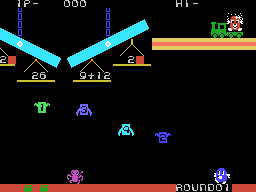
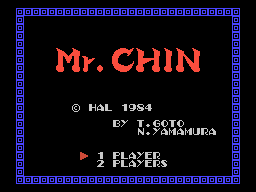
We can also imagine that different manufacturers could have used stylized system fonts
to give their computers a distinctive look and more personality:
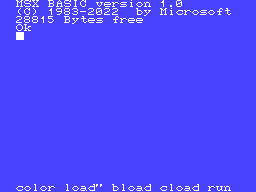
Have fun!!
Youkai Yashiki - Graphics patch source code
Oct 30, 2022
One year (and a half) ago,
the graphical patch for
Youkai Yashiki (CASIO, 1986)
was released,
also known as
Ghost House.
A friendly reminder of the superb graphics
yazioh
did:
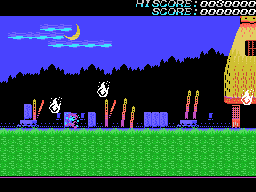
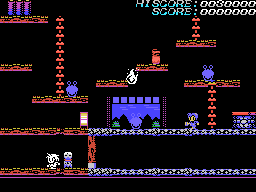
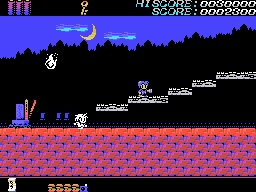
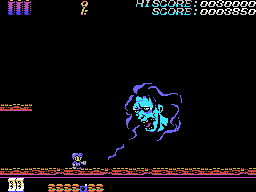
Today, I have finally cleaned up the source code of the patches and uploaded it to GitHub.
Get the patch here:
Youkai Yashiki - Graphics patch v1.1 (Yazioh & Nestruo, 2021-07-12).zip
Browse the source code at
github.com/theNestruo/msx-youkaiyashiki-patch
Happy patching!!
Recursive Mono Duotone Custom
Oct 17, 2022
Recursive Mono Duotone Custom (Rec Mono DtCustom) is a custom build of
Recursive Sans & Mono.
Rec Mono Duotone
A personal favorite — this use the Linear style for Regular text and Casual styles for Bold, Italic, & Bold Italic text. In many themes that use italic styles, this will give most code a utilitarian look, but set comments, some keywords, and certain headlines in the more-handwritten Casual style.
This custom build is based on Rec Mono Duotone configuration, with some OpenType Features tweaks:
- restores the non-simplified
l,
- uses the simplified
r,
- restores the serif in
L
and
Z, and
- restores the non-simplified
6
and
9.
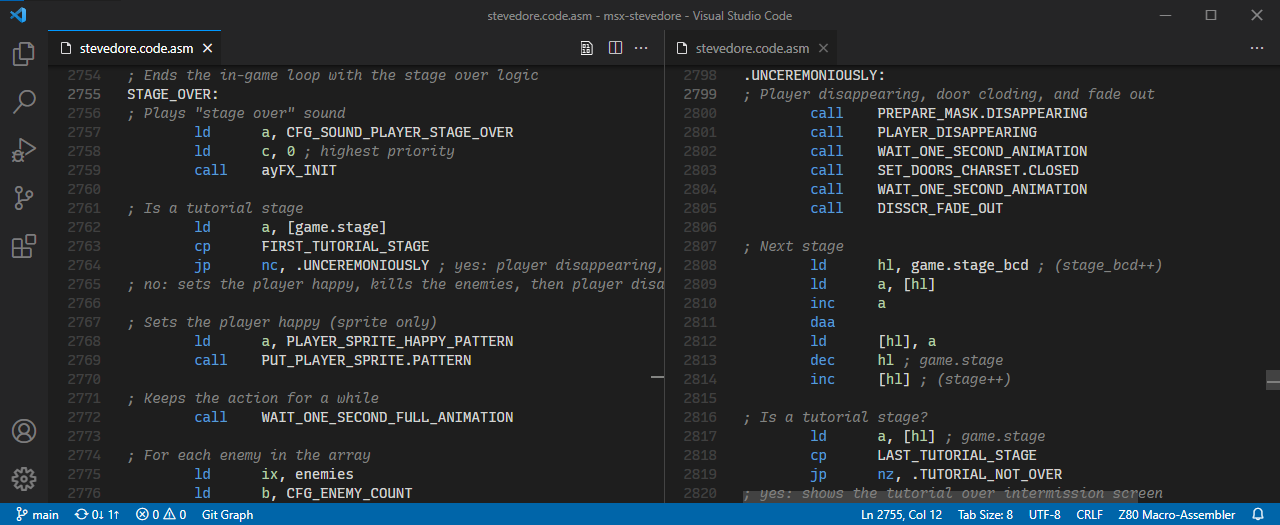
Get it here:
RecMonoDtCustom-1.085.zip
Happy coding!!
Happy birthday, Stevedore!
Oct 18, 2022
Happy birthday, Stevedore!
Two years ago, Stevedore for MSX was released.
To celebrate the second anniversary, you can now download the original soundtrack converted to MP3 for your convenience!
You can now play (and download) for free at
thenestruo.itch.io/stevedore
Physical cartridges can be acquired at
MSX Cartridge Shop
And you can browse the source code at
github.com/theNestruo/msx-stevedore
Have fun!!
Stevedore password generator
Jul 09, 2022
Stevedore password system was cracked by MSX user Briqunullus on Jan 16, 2021, and then I shared the
password generator
I used during the development process as a
GitHub Gist
.
Today, I was talking with
MSX AREA
editor
Juanmi Ortuño
about Stevedore,
then I remembered the password generator was not available online.
So here it is:
Have fun!!
Z80 Assembly meter v3.0.0
Feb 19, 2022
The Z80 Assembly meter extension for Visual Studio Code reaches version 3.0.0
and gains support for user-defined macros.
Major version 4.0.0 released
Major version 6.0.0 released
Z80 Assembly meter v2.0.0
Nov 18, 2021
The Z80 Assembly meter extension for Visual Studio Code reaches version 2.0.0
and gains support for Pasmo, SDCC, and SjASMPlus assembler syntax.
Major version 3.0.0 released
Major version 4.0.0 released
Major version 6.0.0 released
Happy birthday, Stevedore!
Oct 18, 2021
Happy birthday, Stevedore!
One year ago, Stevedore for MSX was released.
To celebrate the first anniversary, you can now play (and download) for free at
thenestruo.itch.io/stevedore
Physical cartridges can be acquired at
MSX Cartridge Shop
And you can browse the source code at
github.com/theNestruo/msx-stevedore
Have fun!!
You can now download the original soundtrack
Due a bug in BlueMSX 2.8.x emulator, players were getting a forced
game over
after loading a save state.
If you replace you .exe with BlueMSX 2.9.0, save states will work as intended.
Get the Blue MSX 2.9.0 compiled executable here:
github.com/ducasp/blueMSX
PCXTOOLS v3.0
Oct 02, 2021
PNG2MSX
and
PNG2SPR[+]
are free command line tools to convert PNG images to TMS9918 (MSX-1 VDP) format
(i.e. CHRTBL/CLRTBL/NAMTBL-ready values, and SPRTBL/SPATBL-ready values).
TMX2BIN
is a free command line tool to convert Tiled maps to binary.
The new version 3.0 uses PNG
(Portable Network Graphics)
files as inputs,
instead of the obsolete PCX
(PiCture eXchange).
Get them and browse the source code at
github.com/theNestruo/pcxtools
Happy coding!!
Youkai Yashiki - Graphics patch
Jul 8, 2021
One month ago,
these superb graphics by
yazioh
were just a mock-up of
Youkai Yashiki (CASIO, 1986),
also known as
Ghost House, for MSX.
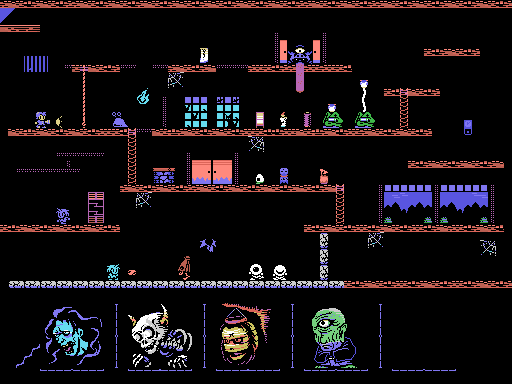
Today, you can play with those graphics!
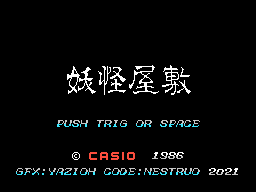


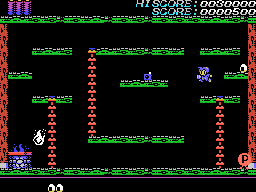


The graphical patch for the game is offered in two flavours:
- JP, with the original items (onigiri, omamori, geta shoes…) and original ending message
- EN, with reworked items (hamburguer, four leaf clover, sneakers…) and translated ending message.
Additionally, a minipatch is provided for those who want to play with enhancements but using the original graphics.
Get it here:
Youkai Yashiki - Graphics patch v1.1 (Yazioh & Nestruo, 2021-07-12).zip
Enjoy!!
Pyramid Warp Enhanced+
May 26, 2021
Can you spot the differences between the original MSX
Pyramid Warp (T&E soft, 1983)
and the Enhanced+ version?
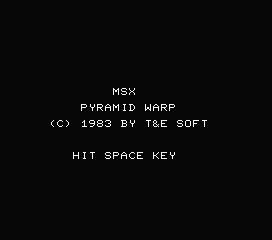
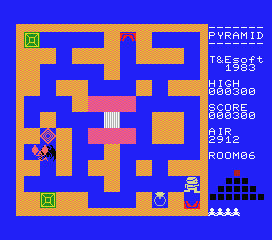
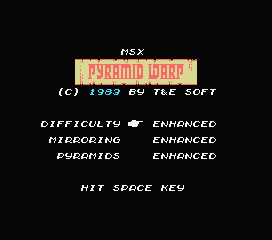
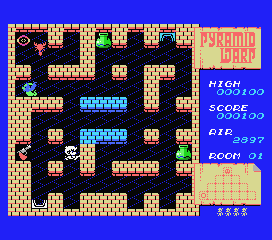
With music by
bitcaffe
and graphics by
nenefranz
Get it here:
PyramidWarp.enhancedplus.rom
Browse the source code, including an annotated disassembly of the original
Pyramid Warp (T&E soft, 1983), at
github.com/theNestruo/msx-pyramidwarpex
Enjoy!!
Dark- (VSCode theme) released
Apr 23, 2021
Simple dark themes, based on the default Dark (Visual Studio) theme but with less syntax highlight.
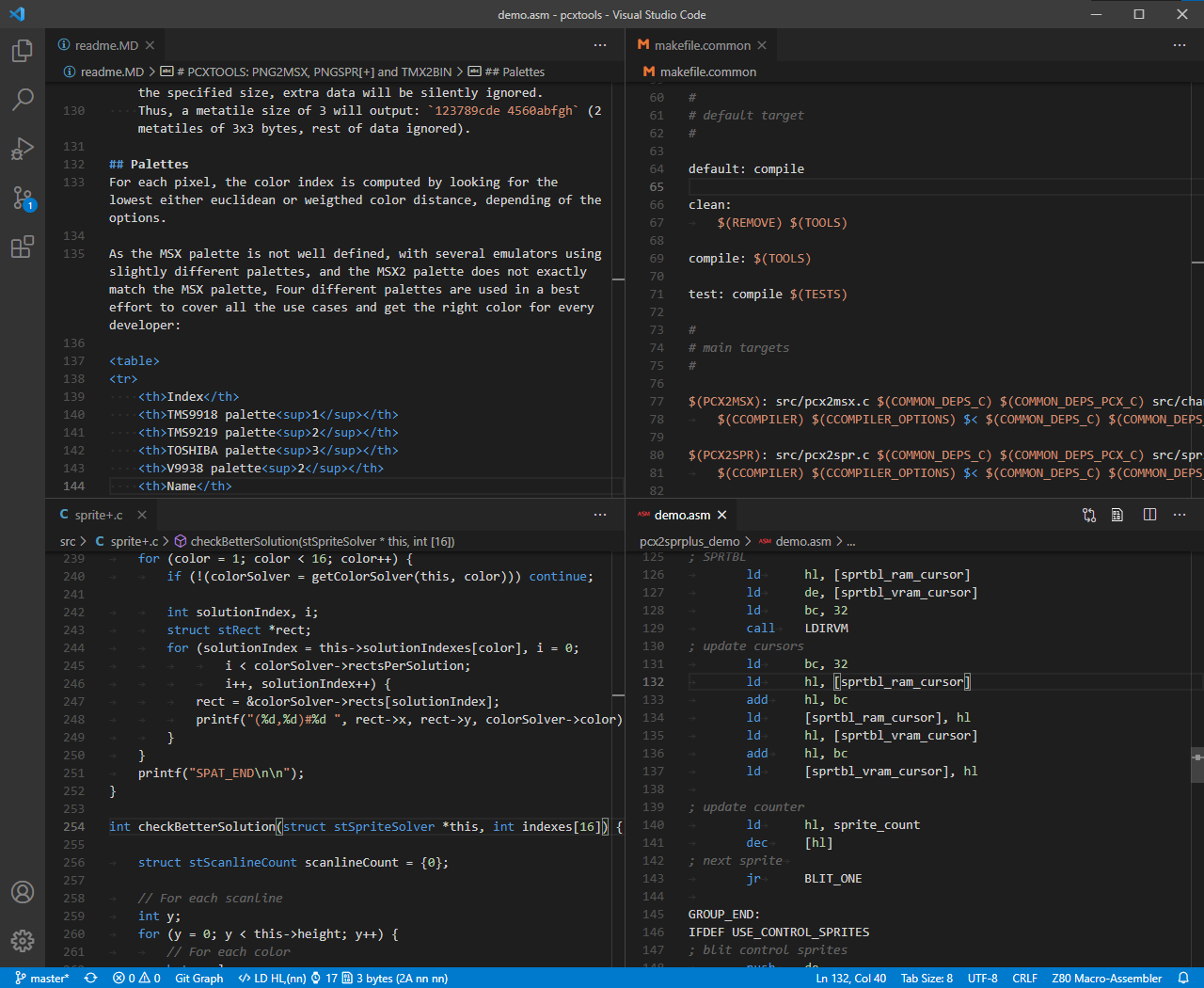
Get them here:
Dark-
Browse the source code at
github.com/theNestruo/dark-minus-theme-vscode
Happy coding!!
Stevedore
Oct 19, 2020
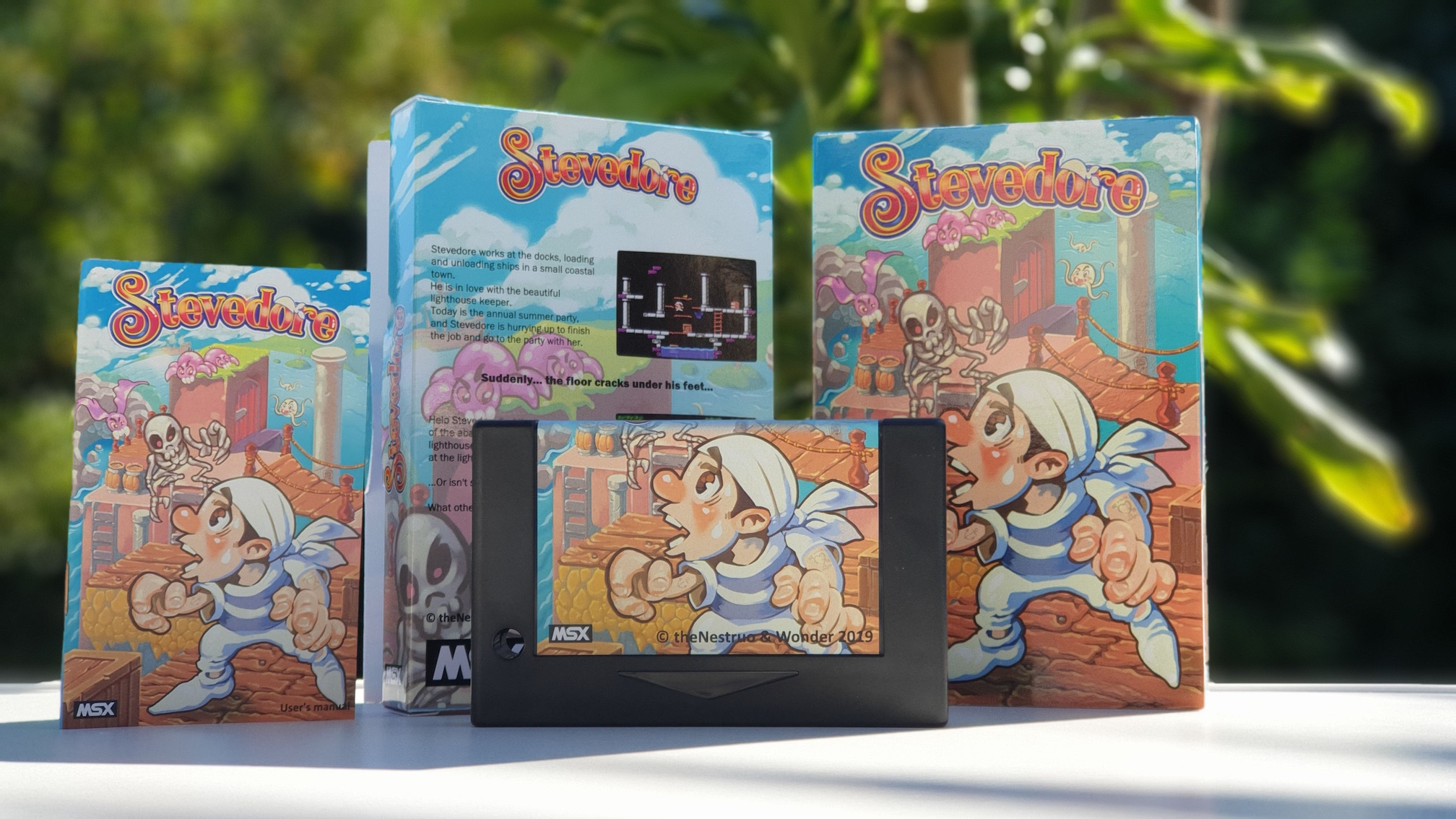
Available now at
MSX Cartridge Shop
!
You can now play (and download) for free
You can now download the original soundtrack
Z80 Assembly meter v1.0.0
Mar 8, 2020
The Z80 Assembly meter extension for Visual Studio Code reaches version 1.0.0
and gains support for Z80N (ZX Spectrum Next Extended Z80 instruction set).
Major version 2.0.0 released
Major version 3.0.0 released
Major version 4.0.0 released
Major version 6.0.0 released
Z80 Assembly meter (VSCode extension) released
Sep 14, 2020
The Z80 Assembly meter extension for Visual Studio Code meters clock cycles and bytecode size from Z80 assembly source code.
Major version 1.0.0 released
Major version 2.0.0 released
Major version 3.0.0 released
Major version 4.0.0 released
Major version 6.0.0 released
Congratulations, Pérez the Mouse!
Feb 5, 2012
Congratulations, Pérez the Mouse!
Pérez the Mouse
won first place in the MSX-BASIC Contest 2011!
Let's celebrate by revealing a little secret... Did you know there is an hidden jukebox in the cassette?
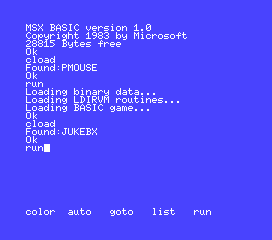
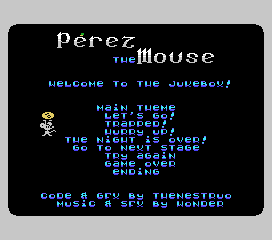
Get it here:
Perez the Mouse v1.1 (theNestruo & Wonder, 2011-12-09).zip
Have fun!!
Pérez the Mouse
Oct 26, 2011
Pérez the Mouse presented to
MSXBlog's
MSX-BASIC Contest 2011!
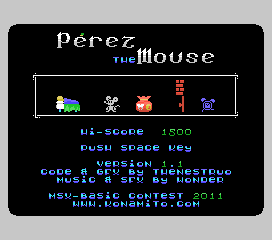
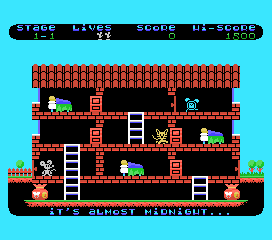
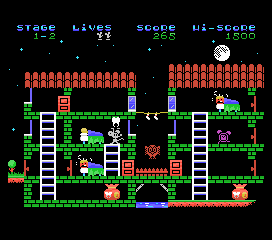
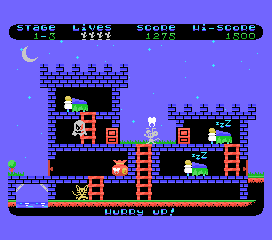
With music by Wonder
Get it here:
Perez the Mouse v1.1 (theNestruo & Wonder, 2011-12-09).zip
Enjoy!!
Contest entry updated! More graphics, more difficulty levels, more musics, and faster gameplay!
Pérez the Mouse won first place in the MSX-BASIC Contest 2011!

































